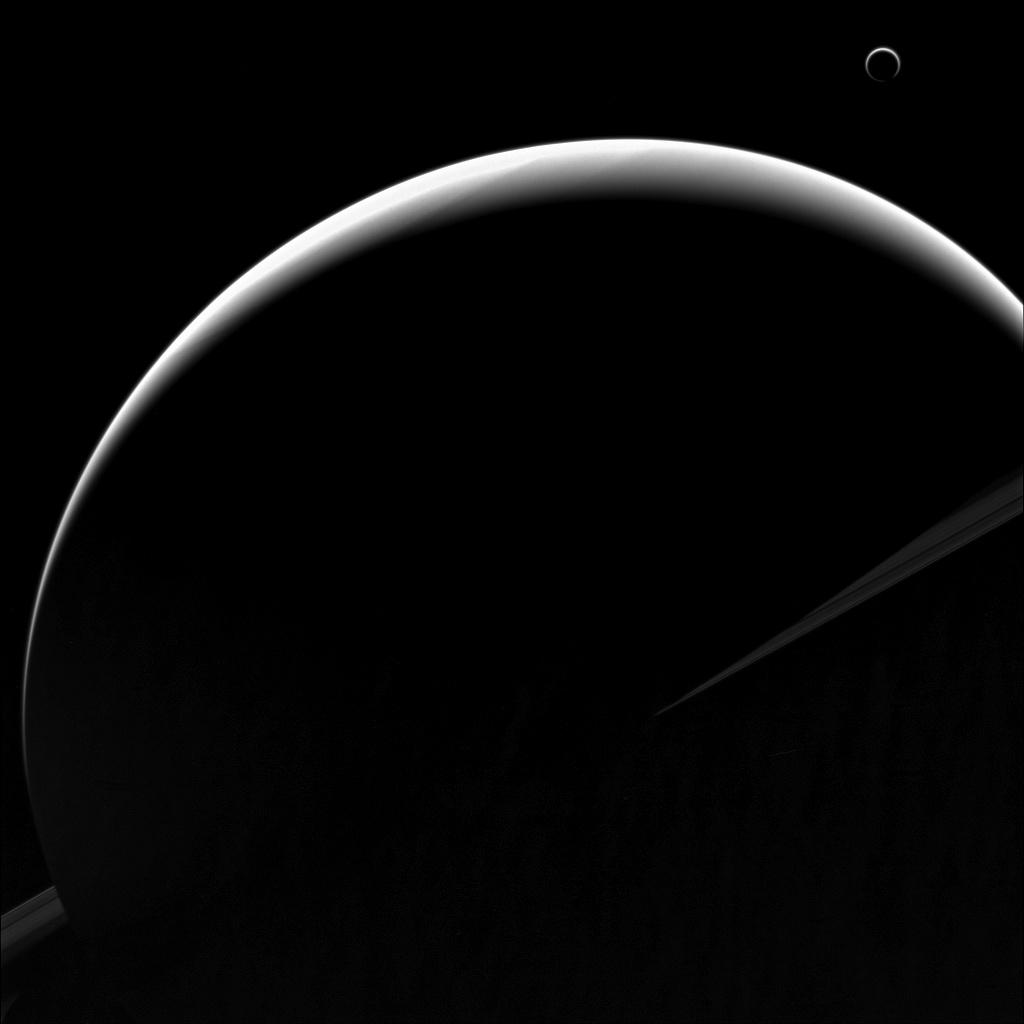Amazing NASA Photo of a Crescent Saturn and Titan Is a Must-See

An amazing photo taken by a NASA probe shows Saturn and its large moon Titan shining as pretty crescents in deep space.
The two cosmic bodies were imaged by the Cassini spacecraft, which has been exploring the Saturn system for about 10 years. The image — released on Monday (Nov. 3) — was captured as the robotic ship was flying about 1.1 million miles (1.7 million kilometers) from the ringed wonder on Aug. 11, 2013, according to NASA. Some of Saturn's ring plane can even be seen in the black and white image.
"More than just pretty pictures, high-phase observations — taken looking generally toward the sun, as in this image — are very powerful scientifically since the way atmospheres and rings transmit sunlight is often diagnostic of compositions and physical states," NASA officials said in an image description. "In this example, Titan's crescent nearly encircles its disk due to the small haze particles high in its atmosphere scattering the incoming light of the distant sun."

Cassini has taken many photos of Titan during its time at Saturn. A recently released view of the moon shows both of the moon's north polar seas reflecting sunlight, a view that has never been seen by scientists on Earth.
Titan is Saturn's largest moon, and it is the only other body in the solar system (aside from Earth) that is known to have liquid on its surface. However, unlike Earth, Titan's liquid is in the form of liquid methane and ethane, not water, NASA officials have said.
"Before Cassini's arrival at Saturn, scientists suspected that Titan might have bodies of open liquid on its surface," NASA officials said in a statement. "Cassini found only great fields of sand dunes near the equator and lower latitudes, but located lakes and seas near the poles, particularly in the north."
Cassini launched to space in 1997. It arrived in the Saturn system in 2004, and has been beaming back information about the ringed planet ever since. The probe's mission should continue until at least 2017, when the craft will intentionally plunge into Saturn's atmosphere, ending its time studying the system, and burning up harmlessly in the planet's atmosphere.
Get the Space.com Newsletter
Breaking space news, the latest updates on rocket launches, skywatching events and more!
Follow Miriam Kramer @mirikramer and Google+. Follow us @Spacedotcom, Facebookand Google+. Original article on Space.com.
Join our Space Forums to keep talking space on the latest missions, night sky and more! And if you have a news tip, correction or comment, let us know at: community@space.com.

Miriam Kramer joined Space.com as a Staff Writer in December 2012. Since then, she has floated in weightlessness on a zero-gravity flight, felt the pull of 4-Gs in a trainer aircraft and watched rockets soar into space from Florida and Virginia. She also served as Space.com's lead space entertainment reporter, and enjoys all aspects of space news, astronomy and commercial spaceflight. Miriam has also presented space stories during live interviews with Fox News and other TV and radio outlets. She originally hails from Knoxville, Tennessee where she and her family would take trips to dark spots on the outskirts of town to watch meteor showers every year. She loves to travel and one day hopes to see the northern lights in person. Miriam is currently a space reporter with Axios, writing the Axios Space newsletter. You can follow Miriam on Twitter.









